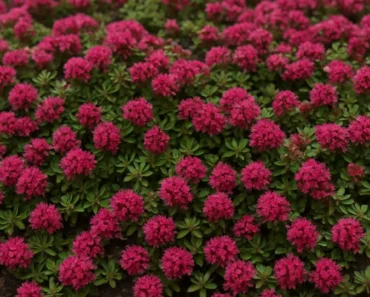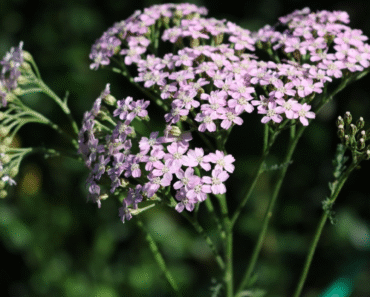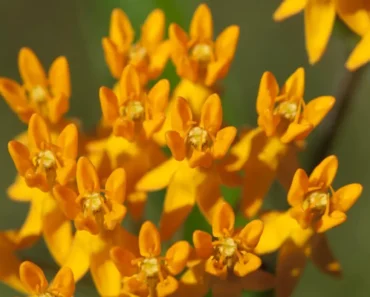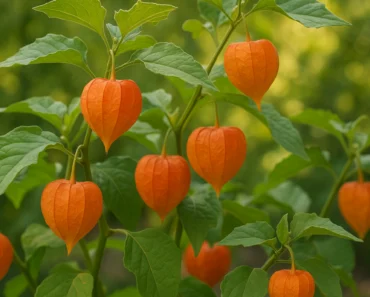
Bugleweed (Ajuga reptans), also known as Carpet Bugle, is a versatile and attractive groundcover prized for its colorful foliage and spring flower spikes. This definitive guide provides everything you need to know to successfully plant and establish bugleweed, creating a dense, weed-suppressing mat in your garden that will transform bare spaces into vibrant carpets of color.
Table of Contents
Planting Bugleweed (Ajuga) at a Glance: Key to Success
Getting your ajuga planting right from the start ensures years of beautiful, low-maintenance groundcover. Here are the essential elements for successful bugleweed establishment:
- Best Time to Plant: Spring or early fall (allows roots to establish before extreme heat or cold)
- Light Requirements: Full sun to partial shade (best color develops in sun, but tolerates more shade than many groundcovers)
- Soil Needs: Moist, well-draining soil; adaptable to various soil types but performs best in soil rich in organic matter
- Proper Spacing: 6-12 inches apart, depending on variety and desired speed of coverage
- Planting Depth: Plant at the same depth it was growing in its nursery pot, ensuring the crown remains at soil level
- Initial Watering: Water thoroughly immediately after planting and maintain consistent moisture until established
- Key Benefit: Excellent, fast-spreading groundcover that suppresses weeds effectively
- Key Consideration: Can spread vigorously through stolons; plan containment strategies if needed
Know Your Groundcover: An Introduction to Bugleweed (Ajuga)
What is Bugleweed?
Bugleweed, scientifically known as Ajuga reptans, belongs to the mint family (Lamiaceae) and serves as one of nature’s most reliable groundcover solutions. This hardy perennial produces rosettes of colorful leaves topped with distinctive flower spikes in spring, typically displaying blue, purple, pink, or white blooms that attract beneficial pollinators to your garden.
Common cultivars include bronze-leafed varieties, variegated selections, and compact forms, each offering unique aesthetic qualities while maintaining the species’ robust growing characteristics.
Growth Habit: A Spreading Sensation
Understanding how to plant bugleweed effectively requires grasping its stoloniferous growth pattern. Ajuga reptans spreads through above-ground runners called stolons, which root at nodes to establish new plants. This natural propagation method allows a single plant to cover substantial areas within one to two growing seasons.
The mother plant sends out these runners in all directions, creating daughter plants that eventually form the characteristic dense mat. This spreading mechanism explains why proper spacing during initial ajuga planting is crucial for achieving uniform coverage.
Benefits of Planting Bugleweed
Weed Suppression: Once established, bugleweed creates such dense coverage that weeds struggle to germinate and establish, reducing maintenance requirements significantly.
Erosion Control: The extensive root system and mat-forming habit make ajuga reptans excellent for stabilizing slopes and preventing soil erosion.
Pollinator Attraction: Spring flower spikes provide nectar for bees, butterflies, and other beneficial insects when few other plants are blooming.
Year-Round Interest: Many varieties offer colorful foliage that persists through winter, providing garden interest even in dormant seasons.
Potential Downsides & How to Manage Them
Aggressive Spread: While beneficial for coverage, bugleweed’s vigor can overwhelm nearby plants. Install landscape edging or choose less aggressive cultivars for contained areas.
Crown Rot Risk: In poorly draining soils with excessive moisture, ajuga can develop crown rot. Proper site selection and soil preparation prevent this issue.
Planting Bugleweed Like a Pro: Your Detailed Step-by-Step Guide
Step 1: Choosing the Right Time to Plant Bugleweed
Spring Planting (March-May): Ideal for most regions as soil temperatures warm and moisture levels remain adequate. Plants establish strong root systems before summer heat stress.
Fall Planting (September-October): Excellent alternative allowing root development during mild weather before winter dormancy. Avoid planting too late, as plants need 6-8 weeks to establish before hard frost.
Avoid: Peak summer heat when plants struggle with establishment stress, and frozen ground periods when soil preparation is impossible.
Step 2: Selecting the Perfect Location for Your Ajuga
Sun Exposure Assessment:
- Full Sun: Produces most vibrant foliage colors and compact growth
- Partial Shade: Excellent compromise offering good color with some protection
- Deep Shade: Tolerates but may produce less colorful foliage and looser growth
Drainage Evaluation: Perform a simple percolation test by digging a hole 12 inches deep, filling with water, and timing drainage. Water should drain within 4-6 hours for optimal ajuga planting success.
Spread Considerations: Choose locations where natural expansion is desired or easily managed through edging or barriers.
Step 3: Preparing the Planting Site & Soil

Site Clearing: Remove all weeds, grass, and debris from the planting area. Use a hoe or hand tools to eliminate competing vegetation that could interfere with establishment.
Soil Amendment: Work 2-3 inches of compost or well-aged manure into the top 6-8 inches of soil. This organic matter improves drainage while retaining moisture and providing nutrients.
Soil Loosening: Break up any compacted areas with a garden fork or tiller, creating a friable planting medium that roots can easily penetrate.
Site Leveling: Smooth the prepared area to eliminate depressions where water might collect and cause crown rot issues.
Step 4: Determining Optimal Spacing for Bugleweed Plants
6-Inch Spacing: Use for fastest coverage and immediate impact. More expensive initially but creates solid coverage within one growing season.
12-Inch Spacing: Economic choice for large areas, achieving full coverage in 1-2 seasons depending on growing conditions.
Variety Considerations: Compact cultivars like ‘Chocolate Chip’ can be spaced closer, while vigorous varieties need more room for natural expansion.
Step 5: The Planting Technique: Getting Ajuga in the Ground
Hole Preparation: Dig individual holes or a continuous trench slightly wider than the root ball and at the same depth as the nursery container.
Root Preparation: Gently remove plants from containers, teasing apart any circling roots to encourage outward growth into surrounding soil.
Proper Depth: Position plants so the crown (where stems meet roots) sits at soil level. Burying crowns too deeply promotes rot, while planting too high exposes roots.
Soil Settling: Backfill with amended soil, gently firming around roots to eliminate air pockets while avoiding overcompaction.
Step 6: Watering Thoroughly After Planting
Apply water slowly and deeply immediately after ajuga planting to settle soil around roots and provide essential hydration. Newly planted bugleweed requires approximately 1 inch of water weekly, including rainfall, until establishment occurs (typically 4-6 weeks).
Step 7: Mulching Around Your New Bugleweed Plants
Mulch Benefits: Retains soil moisture, suppresses weeds, and moderates soil temperature fluctuations during establishment.
Suitable Materials: Shredded leaves, compost, or fine bark mulch work well. Avoid thick, matted materials that prevent water penetration.
Application Technique: Apply 1-2 inches of mulch around plants, keeping material away from crowns to prevent moisture-related problems.
Nurturing Newly Planted Bugleweed: The First Few Weeks & Beyond
Watering Schedule for New Ajuga Plants
Weeks 1-2: Water daily if rainfall is insufficient, maintaining consistent soil moisture without waterlogging.
Weeks 3-6: Transition to every other day or as needed based on soil moisture and weather conditions.
After Establishment: Reduce to weekly deep watering, allowing slight drying between applications to encourage deep root development.
Weed Management Around Young Plants
Hand-pull weeds carefully around new plantings to avoid disturbing shallow roots. Pre-emergence herbicides safe for established groundcovers can be applied after initial establishment, but always follow label directions specific to ajuga reptans.
Monitoring for Pests or Diseases
While generally robust, newly planted bugleweed can occasionally experience aphid infestations or fungal issues in overly wet conditions. Regular inspection allows early intervention if problems develop.
When to Expect Full Coverage
Under ideal conditions with proper ajuga planting techniques, expect 50-75% coverage by the end of the first growing season. Complete, dense coverage typically develops during the second year as stolons fill remaining gaps.
Creative Ways to Use Bugleweed in Your Landscape
Transform your garden spaces with these innovative applications for newly planted ajuga reptans:
Lawn Alternative: In shaded areas where grass struggles, bugleweed creates a lush, low-maintenance carpet requiring no mowing.
Pathway Edging: Line walkways with colorful varieties for defined borders that soften hardscape elements.
Underplanting Strategy: Use beneath deciduous shrubs and trees where seasonal shade variations suit ajuga’s adaptability.
Rock Garden Integration: Plant between stones and boulders for natural-looking coverage that cascades beautifully.
Slope Stabilization: Prevent erosion on banks and hillsides while creating attractive planted areas.
Companion Planting Combinations:
- Hostas: Provide structural contrast with their large leaves
- Ferns: Create woodland garden atmospheres with textural variety
- Hellebores: Offer winter blooms complementing ajuga’s spring flowers
- Spring Bulbs: Emerge through bugleweed carpet for seasonal interest
Taming the Carpet: How to Manage Bugleweed’s Spread
Installing Landscape Edging
Metal Edging: Provides long-lasting barriers that stolons cannot easily cross. Install 4-6 inches deep for effectiveness.
Plastic Barriers: More economical option requiring periodic replacement but adequate for most situations.
Natural Boundaries: Use existing hardscapes, paths, or dense plantings as containment strategies.
Regular Maintenance Trimming
Remove runners extending beyond desired boundaries monthly during active growing season. Cut stolons with sharp shears where they root at nodes.
Choosing Less Aggressive Cultivars
‘Chocolate Chip’ grows more slowly and stays more contained than species forms, making it ideal for smaller spaces or formal gardens.
Beneficial Aggressive Spread Situations
Large naturalized areas, erosion-prone slopes, and difficult sites where other plants fail benefit from bugleweed’s vigorous colonizing ability.
A Palette of Possibilities: Choosing the Right Bugleweed Variety
Ajuga reptans ‘Bronze Beauty’
Classic bronze-purple foliage with deep blue flower spikes. Reliable performer offering traditional bugleweed appearance with excellent cold hardiness.
‘Black Scallop’
Dramatic near-black, deeply scalloped leaves create striking contrast effects. Slower growing than species but worth the wait for unique coloration.
‘Burgundy Glow’
Variegated leaves combine white, pink, and green coloration for bright accent effects. Particularly attractive in partial shade where colors remain vibrant.
‘Chocolate Chip’
Compact variety with smaller leaves and less aggressive spreading habit. Perfect for contained areas or formal garden settings requiring precise boundaries.
‘Caitlin’s Giant’
Largest-leafed variety producing impressive flower spikes up to 8 inches tall. Makes bold statements in landscape applications requiring substantial presence.
Your Top Bugleweed Planting Questions Answered (Expert FAQ)
How fast does bugleweed spread after planting?
Properly planted ajuga reptans typically spreads 6-12 inches in all directions during the first growing season under favorable conditions. Established plants can expand their coverage area by 50-100% annually through stolon production.
Can I plant bugleweed in full shade?
Yes, bugleweed tolerates full shade better than most groundcovers, though foliage colors may be less intense and growth slightly slower. Ensure adequate moisture in deep shade situations for best establishment.
Does bugleweed need a lot of water after planting?
Newly planted ajuga requires consistent moisture for 4-6 weeks during establishment but not excessive watering. Once established, it becomes quite drought tolerant while preferring consistent soil moisture.
Will bugleweed choke out other plants?
Bugleweed can overwhelm small or weak plants through its spreading growth habit. However, established shrubs, trees, and robust perennials coexist well with proper initial spacing and occasional runner management.
Can I walk on bugleweed?
Ajuga reptans tolerates light foot traffic but isn’t suitable for high-traffic areas. Occasional stepping causes minimal damage, but regular walking paths require more durable alternatives.
Do I need to fertilize bugleweed when planting?
Generally, no additional fertilization is necessary during ajuga planting if soil has been amended with compost. Excessive nitrogen can promote soft growth susceptible to disease issues.
Your Path to a Lush Carpet of Bugleweed
Successfully learning how to plant bugleweed opens doors to versatile, low-maintenance landscaping solutions that provide year-round beauty with minimal effort. The key lies in proper site selection, careful soil preparation, and understanding this remarkable plant’s natural growth patterns.
Remember that ajuga reptans rewards patience during establishment with decades of reliable performance. Whether creating woodland gardens, solving difficult growing conditions, or simply adding colorful groundcover interest, properly planted bugleweed becomes a valuable garden asset that multiplies your initial investment through natural propagation.
The most successful ajuga planting projects begin with realistic expectations about spread management and end with gardens transformed by vibrant, living carpets that suppress weeds while supporting beneficial wildlife.
What are your favorite ways to use bugleweed, or what planting challenges have you faced? Share your experiences in the comments below – your insights help fellow gardeners succeed with their ajuga reptans adventures!
Author
George Wine is a seasoned gardening expert with over 20 years of experience in the field of horticulture. His passion for plants and nature has driven his career, where he has honed his skills in various aspects of gardening, from landscape design to plant care. George holds a Master of Science in Horticulture from the University of California, Davis (UC Davis), a prestigious institution known for its research and advancements in plant science.
Throughout his career, George has worked with a diverse range of clients, offering tailored solutions to enhance outdoor spaces and create thriving gardens. His knowledge and expertise allow him to provide invaluable advice, ensuring that both novice and experienced gardeners achieve their gardening goals. Whether you’re looking for tips on sustainable gardening practices, innovative design ideas, or advice on specific plant species, George is here to help you cultivate the garden of your dreams.






